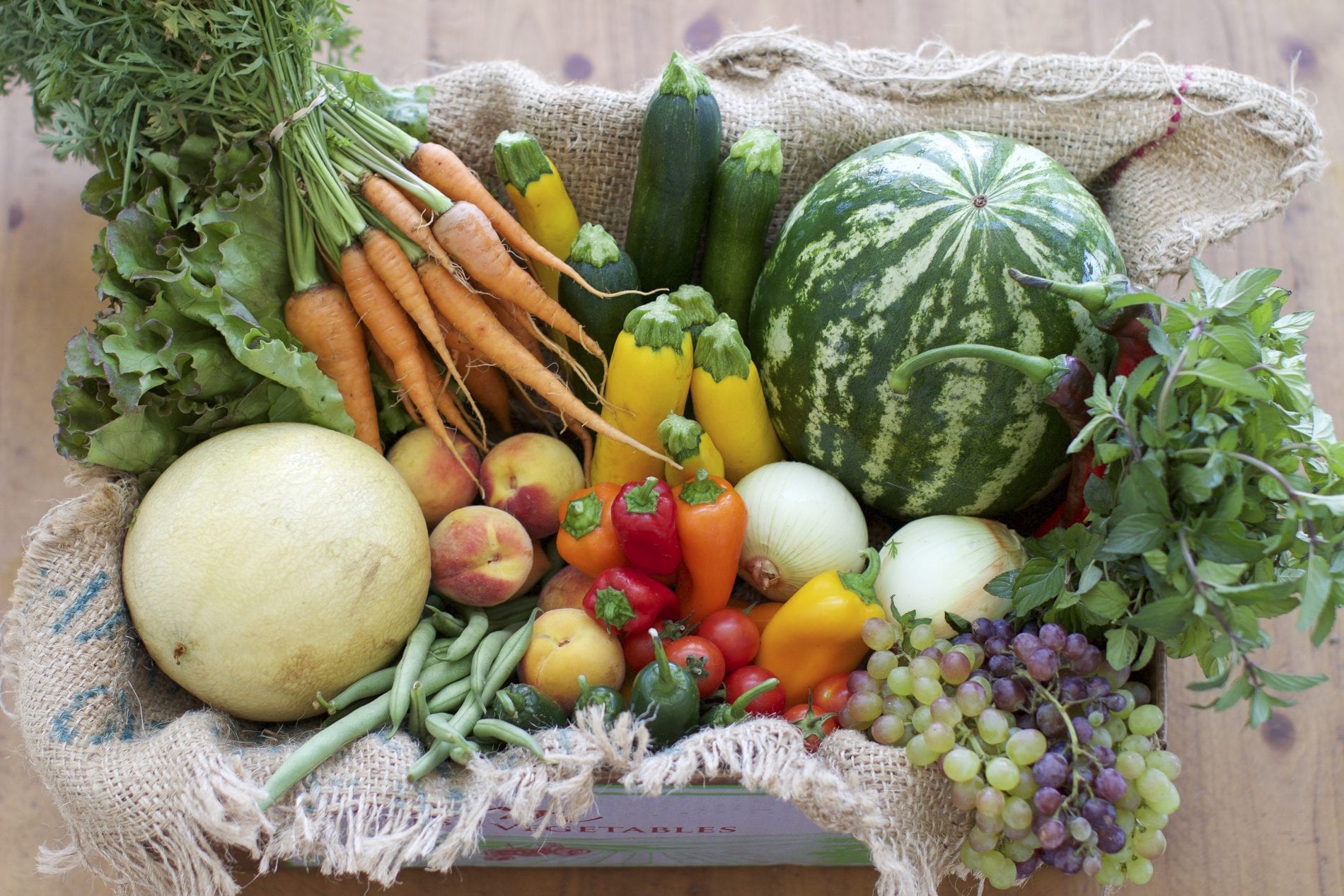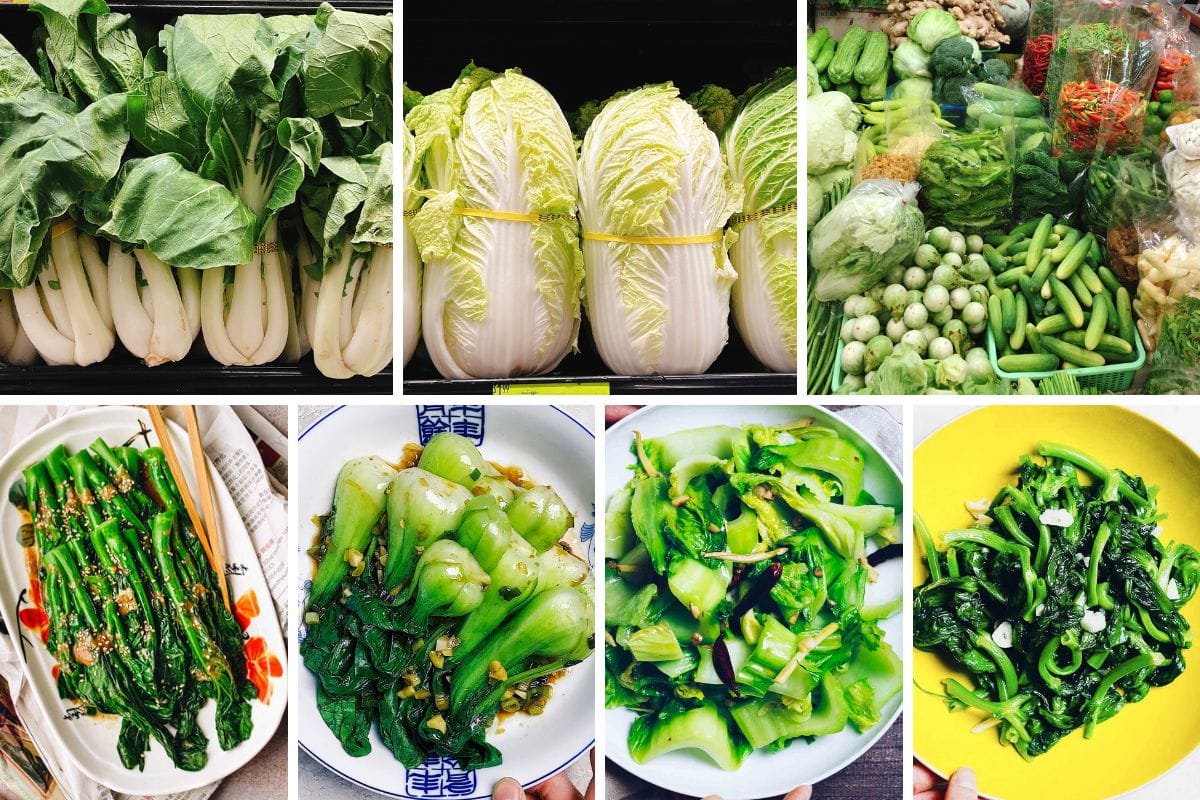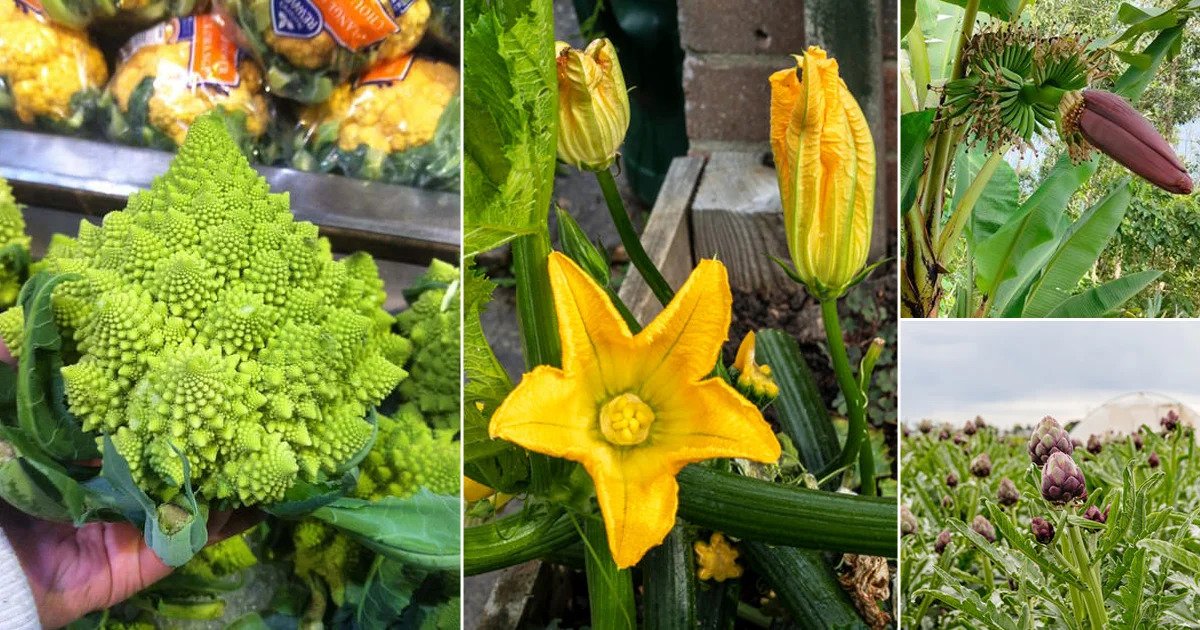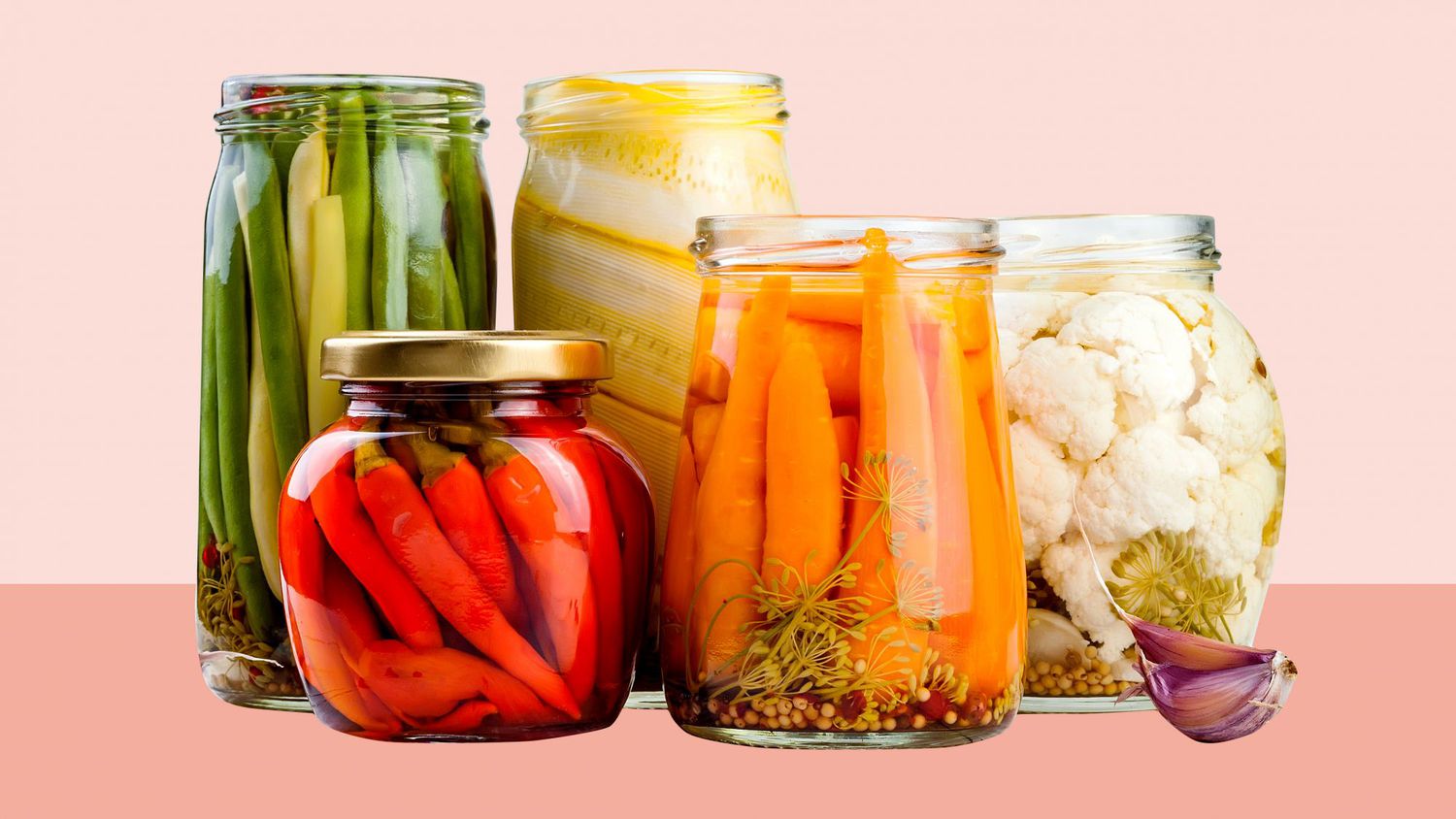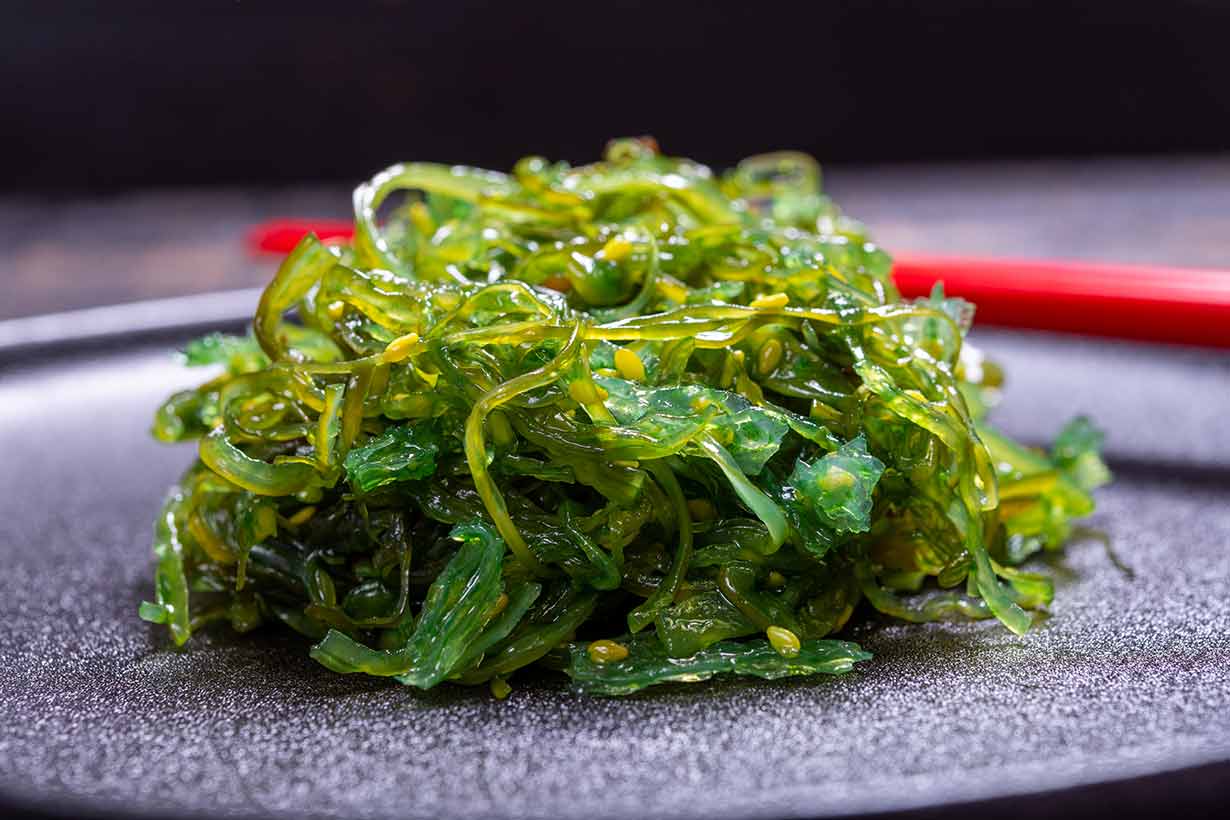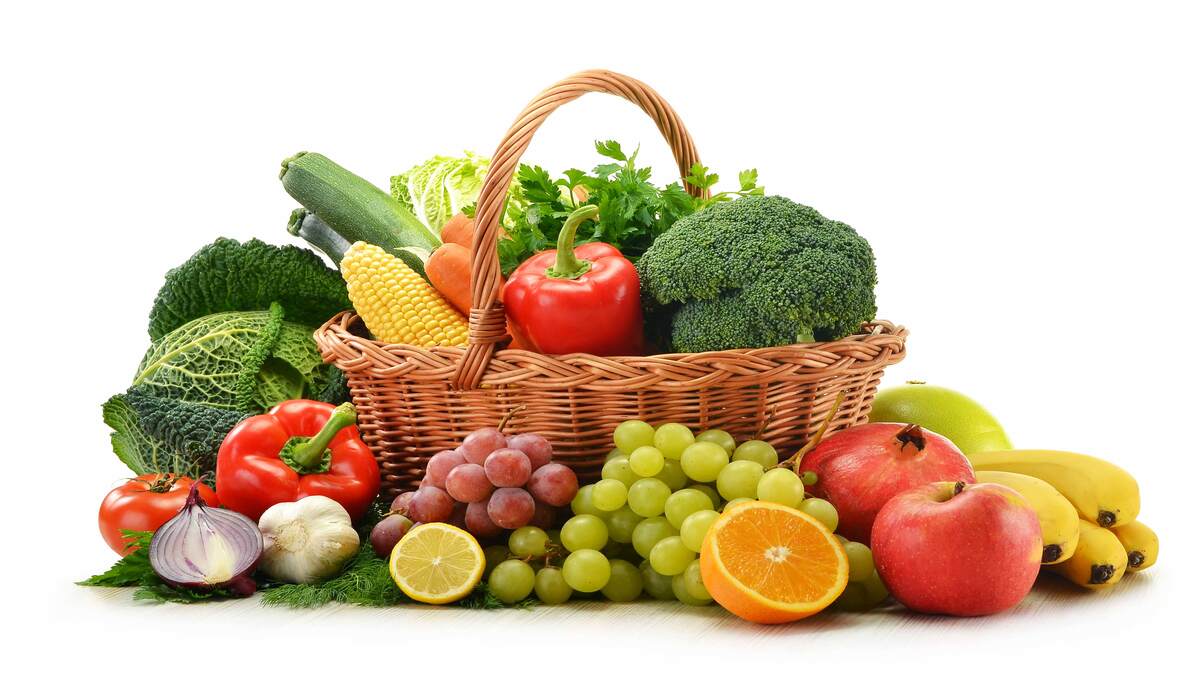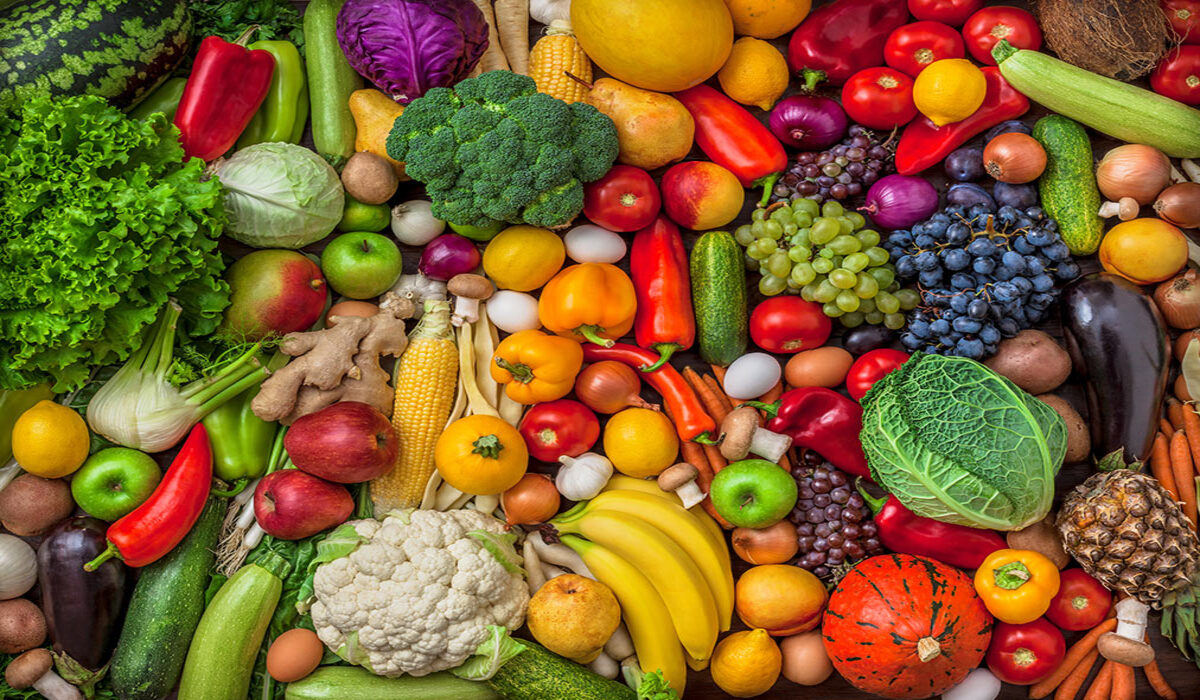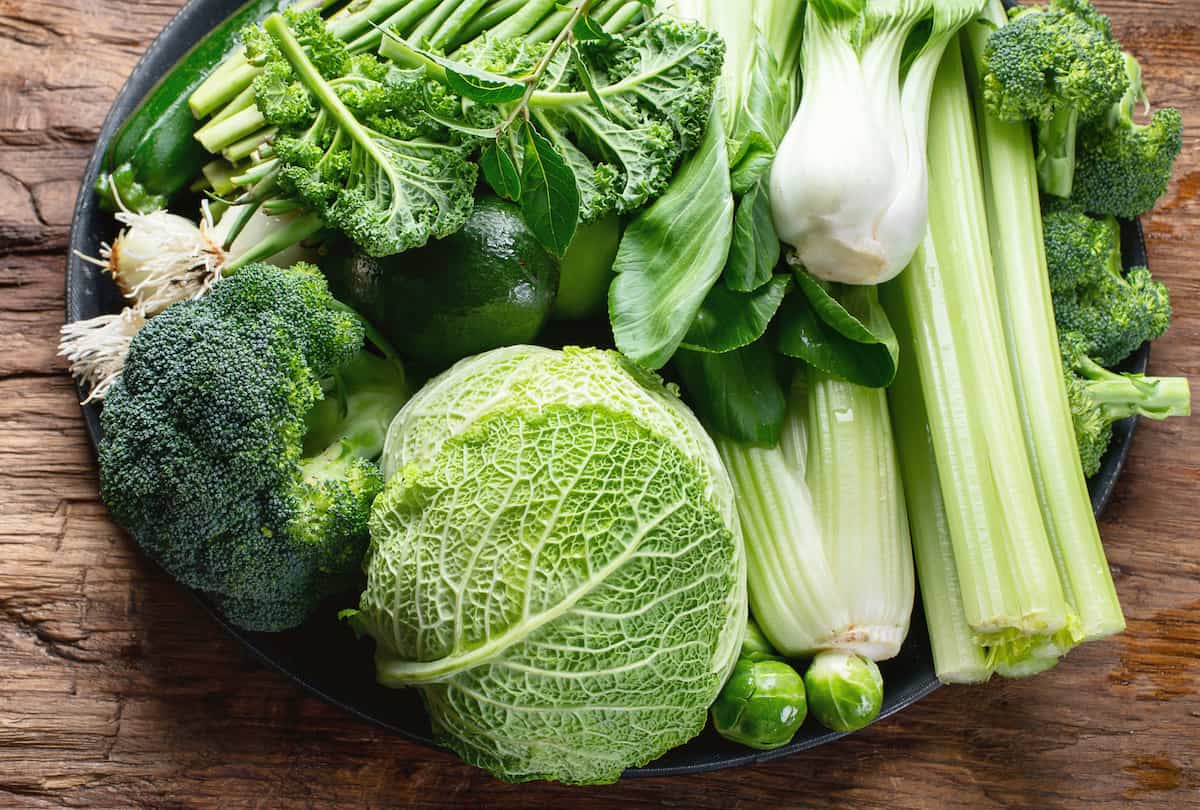Home>Gardening News and Trends>Latest News>What Vegetables Are High In Iodine


Latest News
What Vegetables Are High In Iodine
Modified: January 22, 2024
Discover which vegetables are high in iodine and how they can contribute to your overall health. Stay up to date with the latest news on iodine-rich vegetables.
(Many of the links in this article redirect to a specific reviewed product. Your purchase of these products through affiliate links helps to generate commission for Chicagolandgardening.com, at no extra cost. Learn more)
Table of Contents
Introduction
Welcome to our comprehensive guide on iodine-rich vegetables! In today’s health-conscious world, maintaining a balanced diet is crucial for overall well-being. Among the essential nutrients needed by the body, iodine plays a vital role in supporting thyroid function and ensuring proper metabolism.
Iodine is an essential mineral that the body cannot produce on its own, which means it must be obtained through the diet. While it is present in small amounts in various foods, certain vegetables are particularly rich in iodine, making them excellent choices for those looking to boost their iodine intake.
In this article, we will explore the importance of incorporating iodine into our diet and dive into the world of iodine-rich vegetables. Whether you are a vegetarian, a vegan, or simply looking for alternative sources of iodine, these vegetables can help you meet your nutritional needs.
Understanding the significance of iodine in our diet is the first step towards ensuring optimal health. Iodine plays a crucial role in thyroid hormone production, which affects metabolism, growth, and development. It is especially important during pregnancy, as it supports fetal brain development. Inadequate iodine intake can result in iodine deficiency disorders, such as goiter and intellectual impairment.
Now, let’s delve into the world of iodine-rich vegetables and discover the top ten options that can naturally increase your iodine levels. Incorporating these vegetables into your diet can be a delicious and convenient way to ensure you are getting enough iodine to support your overall health and well-being.
Importance of Iodine in the Diet
Iodine is an essential mineral that plays a crucial role in maintaining overall health and well-being. It is an integral component of thyroid hormones, which regulate metabolism, growth, and development in the body. Without sufficient iodine intake, individuals can develop iodine deficiency disorders, leading to various health complications.
One of the primary functions of iodine is to support the thyroid gland’s production of hormones. The thyroid glands produce two main hormones, triiodothyronine (T3) and thyroxine (T4), which regulate the body’s metabolism. These hormones are responsible for controlling how the body uses energy, synthesizes proteins, and regulates temperatures.
Iodine deficiency can lead to an underactive thyroid, also known as hypothyroidism. Symptoms of hypothyroidism include fatigue, weight gain, constipation, and sluggishness. In severe cases, iodine deficiency can cause goiter, a condition characterized by the enlargement of the thyroid gland.
Inadequate iodine intake during pregnancy can have serious consequences for both the mother and the unborn baby. Iodine is essential for the development of the fetal brain and nervous system. A lack of iodine during pregnancy can result in cognitive impairments and a lower IQ in children.
Ensuring adequate iodine intake is especially important for women who are pregnant or planning to become pregnant. The recommended daily intake of iodine for pregnant women is around 220 micrograms per day, compared to 150 micrograms for non-pregnant adults.
Fortunately, incorporating iodine-rich vegetables into your diet can help prevent iodine deficiency. These vegetables not only provide a natural source of iodine but also offer a range of other essential nutrients, making them a healthy addition to any meal plan.
Now that we understand the importance of iodine in our diet, let’s explore the top iodine-rich vegetables available to boost our iodine levels and support optimal health. Incorporating these vegetables into our meals can help us meet our iodine requirements while enjoying delicious and nutritious dishes.
Understanding Iodine Deficiency
Iodine deficiency is a global health issue, affecting millions of people worldwide. It occurs when the body does not receive enough iodine through the diet, leading to a range of health complications. Understanding the causes, symptoms, and consequences of iodine deficiency is crucial in addressing this preventable condition.
Iodine deficiency typically occurs in regions where the soil and water are lacking in iodine. As a result, the food grown in these areas, including vegetables, may contain insufficient levels of iodine. Certain lifestyle factors, such as a vegetarian or vegan diet that excludes iodized salt and seafood, can also increase the risk of iodine deficiency.
One of the most visible signs of iodine deficiency is the development of goiter, an enlargement of the thyroid gland. Goiter can cause a visible swelling in the neck and can lead to symptoms such as difficulty swallowing and breathing. However, not all iodine deficiency cases result in goiter, especially in mild to moderate deficiency.
Iodine deficiency during pregnancy can have severe consequences for both the mother and the baby. It increases the risk of complications such as stillbirth, preterm birth, and low birth weight. However, the most significant impact is on the cognitive development of the child. Inadequate iodine intake during pregnancy can result in mental impairments, including lowered intelligence quotient (IQ) and learning disabilities.
Identifying iodine deficiency can be challenging, as symptoms may vary and can be subtle. Fatigue, weight gain, dry skin, and hair loss are common signs of iodine deficiency. However, these symptoms can also be attributed to other conditions, making it essential for healthcare professionals to diagnose iodine deficiency accurately.
Preventing and treating iodine deficiency involves increasing iodine intake through dietary sources or supplements. For individuals following a vegetarian or vegan diet, it is important to explore alternative iodine-rich food options like vegetables, as seafood is a primary source of iodine in many diets.
Incorporating iodine-rich vegetables into the diet can help address iodine deficiency. These vegetables can provide a natural and sustainable source of iodine, making them an ideal choice for those looking to prevent or overcome iodine deficiency. By consuming these vegetables regularly, individuals can boost their iodine levels and promote optimal health.
Now that we have a deeper understanding of iodine deficiency and its consequences, let’s explore the top ten iodine-rich vegetables that can help us overcome this condition and improve our overall well-being.
Iodine-Rich Vegetables for a Healthy Diet
When it comes to increasing iodine intake, incorporating iodine-rich vegetables into your diet is a delicious and nutritious way to ensure you are meeting your nutritional needs. These vegetables not only provide a natural source of iodine but also offer a wide range of other essential nutrients to support overall health and well-being. Let’s explore the top ten iodine-rich vegetables to include in your healthy diet:
-
Seaweed
Seaweed, such as kelp or nori, is one of the richest sources of iodine. It can provide exceptionally high levels of iodine, making it an excellent choice for those looking to boost their iodine intake naturally. Sprinkle some dried seaweed flakes on your salads or incorporate them into your sushi rolls for a flavorful iodine boost.
-
Navy Beans
Navy beans are not only packed with fiber and protein but also contain a good amount of iodine. These versatile legumes can be added to soups, stews, or salads to enhance the iodine content of your meals.
-
Potatoes
Surprisingly, potatoes are another iodine-rich vegetable. They are not only a staple in many diets but also provide a good source of iodine. Enjoy baked, roasted, or mashed potatoes as a tasty way to incorporate iodine into your meals.
-
Lima Beans
Lima beans, also known as butter beans, are not only creamy and delicious but also a great source of iodine. These legumes can be cooked and added to salads, casseroles, or enjoyed as a side dish.
-
Corn
Corn is a popular vegetable that is not only versatile but also contains iodine. Whether you enjoy it on the cob, in salads, or as a side dish, you can benefit from its iodine content.
-
Spinach
Known for its nutrient density, spinach is also a good source of iodine. Incorporate spinach into your diet by adding it to salads, stir-fries, or smoothies for an iodine-rich boost.
-
Swiss Chard
Swiss chard is a leafy green vegetable that is not only delicious but also packed with iodine. Sautee it as a side dish or add it to your favorite recipes to enjoy its nutritious benefits.
-
Brussels Sprouts
Brussels sprouts are not only a tasty addition to any meal but also provide iodine. Roast them, sautee them, or add them to stir-fries for a nutritious iodine-rich vegetable option.
-
Kale
Kale has gained popularity as a superfood, and it also happens to be a fantastic source of iodine. Whether you enjoy it in salads, smoothies, or as a side dish, incorporating kale into your diet can boost your iodine levels.
-
Green Peas
Green peas are a versatile and tasty vegetable that can add a pop of sweetness to your meals. Luckily, they also provide a good amount of iodine, making them an excellent option for boosting your iodine intake.
Incorporating these iodine-rich vegetables into your diet can help ensure you are meeting your iodine requirements while enjoying a variety of delicious and nutritious meals. Whether you choose to enjoy them as main ingredients or as side dishes, these vegetables offer a natural and sustainable source of iodine to support your overall health and well-being.
Seaweed
Seaweed is a nutritional powerhouse and one of the richest sources of iodine available. It is a staple in many Asian cuisines and has gained popularity worldwide for its numerous health benefits. Various types of seaweed, such as kelp, nori, and wakame, offer substantial amounts of iodine, making them a top choice for boosting iodine intake.
Adding seaweed to your diet is not only an excellent way to increase your iodine levels but also provides a range of other essential nutrients. Seaweed is rich in antioxidants, vitamins, minerals, and fiber, making it a nutrient-dense addition to any meal.
One of the most popular ways to consume seaweed is by using nori sheets as a wrap for sushi rolls. Apart from seaweed salads and miso soup, you can also sprinkle dried seaweed flakes on your salads, incorporate them into stir-fries, or use them as a seasoning for various dishes.
It’s important to note that while seaweed is a fantastic source of iodine, it is also high in sodium. Individuals following a low-sodium diet should consume seaweed in moderation. Additionally, it’s essential to choose quality seaweed from trusted sources to ensure its safety and avoid potential contamination.
By incorporating seaweed into your diet, you not only boost your iodine levels but also enjoy its unique flavor and nutrient profile. Experiment with different seaweed varieties and explore various culinary possibilities to take advantage of this iodine-rich powerhouse.
Navy Beans
Navy beans are not only a versatile and delicious addition to various dishes but also provide a good amount of iodine. These small, white beans are a popular choice among legume enthusiasts due to their nutty flavor and creamy texture.
Along with their iodine content, navy beans offer a host of other health benefits. They are a great source of plant-based protein, dietary fiber, vitamins, and minerals. Incorporating navy beans into your diet can help support heart health, regulate blood sugar levels, and promote digestive health.
There are numerous ways to enjoy navy beans in your meals. Add them to soups, stews, or chili for a boost of fiber and protein. Mash them to create delicious bean spreads or dips, or incorporate them into salads for added texture and nutrition. You can even make veggie burgers or meatless meatballs using navy beans as a base.
Cooking navy beans from scratch is easy but time-consuming. Soaking them overnight before cooking helps reduce cooking time and improve digestibility. If you prefer a more convenient option, canned navy beans are also available and can be a quick and nutritious addition to your meals.
While navy beans are an excellent source of iodine, it’s important to remember that they should not be relied upon as the sole source of this essential mineral. Incorporating a variety of iodine-rich foods into your diet ensures a well-rounded iodine intake.
Try adding navy beans to your weekly meal plan to take advantage of their iodine content and reap the many health benefits they offer. The versatility and nutritional value of these legumes make them an excellent choice for those looking to increase their iodine intake and enhance their overall well-being.
Potatoes
Potatoes are a versatile and widely consumed vegetable that not only provides essential nutrients but also contains a good amount of iodine. This starchy root vegetable is a staple in many cuisines around the world and offers a variety of culinary possibilities.
When it comes to iodine content, potatoes can contribute to meeting your dietary requirements. Although not as high in iodine as some other vegetables, such as seaweed, potatoes are still a noteworthy source of this essential mineral.
Incorporating potatoes into your diet is easy and enjoyable. They can be baked, boiled, roasted, mashed, or turned into delicious fries or wedges. Along with their iodine content, potatoes are also packed with other nutrients, including vitamin C, potassium, and fiber.
When preparing potatoes, it’s important to note that their iodine content lies primarily in the skin. Therefore, it’s advisable to leave the skin on when cooking to maximize iodine intake. However, if you prefer peeled potatoes, there are still substantial levels of iodine within the flesh, so you can still enjoy the benefits.
It’s worth mentioning that the iodine content of potatoes may vary depending on the soil in which they are grown. So, opting for organically grown or locally sourced potatoes may provide a better chance of higher iodine levels.
While potatoes themselves can be a healthy addition to your diet, it’s important to be mindful of the way they are prepared. Avoid adding excessive amounts of salt, butter, or high-fat toppings, as they can negate the health benefits and contribute to an unhealthy diet.
By including potatoes in your meals, you not only enhance your iodine intake but also enjoy their versatility and nutritional value. Experiment with different cooking methods and recipes to make the most of this iodine-rich vegetable.
Lima Beans
Lima beans, also known as butter beans, are a nutritious and versatile legume that provides a good amount of iodine. These creamy, buttery beans are not only delicious but also offer a range of health benefits, making them an excellent addition to your diet.
When it comes to iodine content, lima beans contribute to meeting your dietary requirements. They contain a significant amount of iodine, along with other essential nutrients such as protein, fiber, folate, and iron.
You can enjoy lima beans in a variety of ways. Cook them and use them as a side dish, add them to soups and stews for extra heartiness, or incorporate them into salads for added flavor and texture. They can also be mashed and used as a base for dips or spreads.
One of the advantages of lima beans is that they are a versatile ingredient, allowing you to explore various culinary possibilities. From comforting bean soups to creamy bean spreads, the options are endless, making lima beans a great choice for boosting iodine intake.
It’s important to note that lima beans are available both fresh and dried. While fresh lima beans have a shorter season, dried lima beans are readily available and can be a pantry staple. If using dried lima beans, make sure to soak them overnight and cook them thoroughly to ensure tenderness and optimum digestion.
Incorporating lima beans into your diet not only boosts your iodine intake but also brings a host of other health benefits. These beans are a good source of plant-based protein, which is important for vegetarians and vegans. Additionally, their fiber content supports digestive health and helps regulate blood sugar levels.
By adding lima beans to your meals, you not only enhance your iodine intake but also enjoy their delicious taste and nutritional profile. Experiment with different recipes and discover new ways to incorporate these versatile legumes into your diet.
Corn
Corn is a versatile and widely enjoyed vegetable that not only adds flavor and texture to meals but also provides a good amount of iodine. This popular crop is not only delicious, but it also offers a range of nutritional benefits, making it a valuable addition to a well-rounded diet.
Although not as well-known for its iodine content as some other vegetables, corn still contributes to meeting your dietary requirements. It contains a moderate amount of iodine, along with essential nutrients such as fiber, vitamins, and minerals.
Enjoying corn in your meals is easy and enjoyable. Whether you opt for fresh corn on the cob during the summer months or enjoy frozen or canned corn year-round, this versatile vegetable can be incorporated into a variety of dishes.
Grilling or boiling corn on the cob and slathering it with a bit of butter and seasoning creates a classic and satisfying side dish. Corn can also be used as a flavorful ingredient in salads, soups, and stir-fries, adding vibrant color and a subtly sweet taste.
It’s worth noting that while the iodine content of corn varies, it is still a noteworthy source of this essential mineral. Including corn as part of a diverse and balanced diet can contribute to maintaining adequate iodine levels.
It’s important to choose non-GMO and organically grown corn whenever possible to ensure the best quality and minimal exposure to harmful chemicals. Fresh corn that is in season is often the most flavorful and nutritious option.
By incorporating corn into your meals, you not only enhance your iodine intake but also enjoy the natural sweetness and versatility of this beloved vegetable. Whether you enjoy it on the cob, in salads, or as a side dish, corn can be a delicious and nutritious addition to your diet.
Spinach
Spinach, a leafy green vegetable famed for its nutritional profile, is also a good source of iodine. Packed with vitamins, minerals, and antioxidants, spinach offers numerous health benefits and can be an excellent addition to a balanced diet.
When it comes to iodine content, spinach provides a decent amount, making it a valuable vegetable to consider for boosting your iodine levels. Incorporating spinach into your meals not only adds a vibrant green color but also contributes to meeting your dietary requirements.
Spinach can be enjoyed in various ways. Use it as a base for salads, add it to smoothies, or incorporate it into stir-fries and soups. Additionally, spinach can be lightly steamed or sautéed as a side dish or a nutritious addition to omelets, pasta dishes, or sandwiches.
Another advantage of spinach is its versatility in recipes. From classic spinach salads to creamy spinach dips and flavorful spinach-based sauces, there are numerous ways to incorporate this nutritious green into your meals.
In addition to its iodine content, spinach is rich in iron, vitamin K, vitamin C, and folate. This nutrient-dense vegetable supports bone health, promotes cardiovascular well-being, aids in digestion, and boosts the immune system.
It’s important to note that while spinach is generally a great source of iodine, the iodine content can vary depending on the soil in which it is grown. Selecting organically grown or locally sourced spinach can potentially offer higher iodine levels.
By including spinach in your meals, you not only enhance your iodine intake but also enjoy the numerous health benefits it provides. Experiment with different recipes and discover new ways to incorporate this versatile leafy green into your diet for a delicious and nutritious boost.
Swiss Chard
Swiss chard, a colorful leafy green vegetable, is not only visually appealing but also a fantastic source of iodine. With its vibrant stems and dark green leaves, Swiss chard adds both flavor and nutritional value to a variety of dishes.
When it comes to iodine content, Swiss chard is a noteworthy vegetable to include in your diet. It provides a good amount of iodine, making it a valuable option for boosting iodine intake naturally.
Swiss chard can be prepared in various ways to suit your culinary preferences. Sauté it with garlic and olive oil, add it to soups or stews, or use it as a substitute for spinach in recipes. The tender leaves and stems of Swiss chard offer a mild and slightly earthy taste that pairs well with a variety of seasonings and ingredients.
In addition to its iodine content, Swiss chard is rich in vitamins A, C, and K, as well as minerals like magnesium and potassium. It also contains antioxidants that help protect against oxidative stress and inflammation.
One advantage of Swiss chard is that it provides a multitude of benefits with minimal calories, making it an excellent choice for those focused on weight management or improving overall health.
When purchasing Swiss chard, look for vibrant leaves that are crisp and firm. It’s best to consume Swiss chard soon after purchasing, as the leaves can wilt over time. Consider buying organic or locally grown Swiss chard to minimize exposure to pesticides and support sustainable farming practices.
By incorporating Swiss chard into your meals, you not only boost your iodine intake but also enjoy the delicious taste and abundant nutritional benefits it offers. Experiment with different recipes and cooking methods to make the most of this versatile and vibrant leafy green vegetable.
Brussels Sprouts
Brussels sprouts, often misunderstood and overlooked, are not only delicious but also provide a good amount of iodine. These mini cabbage-like vegetables are packed with nutrients, making them a valuable addition to any diet.
When it comes to iodine content, Brussels sprouts offer a notable contribution. Including these cruciferous vegetables in your meals can help boost your iodine intake naturally.
Brussels sprouts can be prepared in various ways to suit different taste preferences. Roast them in the oven for a crispy and caramelized flavor, sauté them with garlic and olive oil for a quick and nutritious side dish, or shred them to create a tasty and vibrant salad.
One of the advantages of Brussels sprouts is their versatility in recipes. They can be used in stir-fries, added to soups and stews, or even grilled for a unique smoky flavor. Experimentation with different cooking methods can help you discover the most enjoyable ways to incorporate Brussels sprouts into your meals.
In addition to their iodine content, Brussels sprouts offer a range of health benefits. They are rich in fiber, vitamin C, vitamin K, and antioxidants that help protect against cell damage and inflammation.
When selecting Brussels sprouts, look for firm and compact sprouts with vibrant green color. Avoid choosing sprouts that have yellowing leaves or appear excessively wilted, as these may indicate a loss of freshness.
By including Brussels sprouts in your diet, you not only enhance your iodine intake but also enjoy their unique taste and nutritional profile. Explore different cooking methods and recipes to make the most of this versatile and nutritious vegetable.
Kale
Kale, often hailed as a superfood, is not only a nutritional powerhouse but also a good source of iodine. With its dark, leafy green appearance, kale has gained popularity as a versatile and nutrient-dense vegetable.
When it comes to iodine content, kale offers a substantial amount, making it a valuable vegetable to consider for increasing iodine intake naturally.
Kale can be enjoyed in various ways, whether raw or cooked. Add it to salads, smoothies, or juicing recipes for a nutrient-packed boost. Alternatively, lightly sauté or steam kale as a side dish or incorporate it into stir-fries and soups.
In addition to its iodine content, kale is rich in antioxidants, vitamins A, C, and K, as well as minerals like calcium and iron. This nutrient-dense vegetable supports various aspects of health, including immune function, bone health, and cardiovascular well-being.
Kale’s versatility extends beyond its nutritional profile. You can experiment with different cooking methods, seasonings, and combinations to find your favorite kale recipes. From crispy kale chips to comforting kale and white bean soup, the options are abundant.
When shopping for kale, look for bunches with vibrant green leaves that are free of wilting or yellowing. Organic or locally sourced kale may be preferable to minimize exposure to pesticides and to support sustainable farming practices.
By incorporating kale into your meals, you not only boost your iodine intake but also enjoy its distinct flavor and numerous health benefits. Whether consumed raw in salads or cooked in a variety of dishes, kale can be a delightful addition to your diet.
Green Peas
Green peas, those tiny and vibrant gems, are not only delicious but also provide a good amount of iodine. These sweet and versatile legumes offer a range of nutritional benefits, making them an excellent addition to a well-balanced diet.
When it comes to iodine content, green peas contribute to meeting your dietary requirements. Incorporating them into your meals can be a simple and tasty way to boost your iodine intake naturally.
Green peas can be enjoyed in numerous ways. They can be steamed or sautéed as a side dish, added to stir-fries or soups for a burst of vibrant color, or used as an ingredient in salads or pasta dishes.
In addition to their iodine content, green peas are high in fiber, vitamins, and minerals. They are a good source of plant-based protein and provide essential micronutrients such as vitamin C, vitamin K, and folate.
Peas are also convenient to include in your diet as they are often available frozen, allowing you to enjoy them year-round. Frozen peas retain their nutritional value and can be easily added to a variety of dishes straight from the freezer.
When purchasing green peas, you can opt for fresh peas when they are in season, or choose frozen peas for convenience and availability. It’s best to avoid canned peas, as they can be high in sodium and may have a softer texture.
By incorporating green peas into your meals, you not only enhance your iodine intake but also enjoy their delightful taste and nutritional benefits. Experiment with different recipes to incorporate these versatile legumes and discover new ways to enjoy their vibrant flavor.
Conclusion
Incorporating iodine-rich vegetables into your diet is a smart and delicious way to ensure you are meeting your nutritional needs. These vegetables not only provide a natural source of iodine but also offer a wide range of other essential nutrients, supporting overall health and well-being.
Iodine is a crucial mineral needed for proper thyroid function and metabolism. It plays a vital role in regulating various bodily processes, such as growth, development, and cognitive function. An inadequate intake of iodine can lead to iodine deficiency disorders, including goiter and cognitive impairments.
Understanding the importance of iodine in our diet and recognizing the signs of iodine deficiency is the first step towards maintaining optimal iodine levels. Fortunately, incorporating iodine-rich vegetables can help prevent and overcome iodine deficiency, ensuring the body receives this essential mineral.
Throughout this article, we explored ten iodine-rich vegetables that can be easily incorporated into your daily meals. From seaweed and navy beans to potatoes, lima beans, corn, spinach, Swiss chard, Brussels sprouts, kale, and green peas, there are numerous options to choose from.
It is worth noting that while these vegetables provide a natural source of iodine, it’s important to consume a varied and balanced diet to ensure adequate iodine intake. Incorporating a variety of iodine-rich foods, along with other sources of essential nutrients, will support overall health and well-being.
Whether you enjoy them as main ingredients, side dishes, or incorporated into your favorite recipes, these iodine-rich vegetables offer a delicious and nutritious way to boost your iodine intake. Remember to choose high-quality produce, and explore different cooking methods to diversify your meals.
So, why not make a conscious effort to include these iodine-rich vegetables in your next grocery trip and get creative in the kitchen? By doing so, you can nourish your body with the essential iodine it needs to thrive and maintain optimal health.
